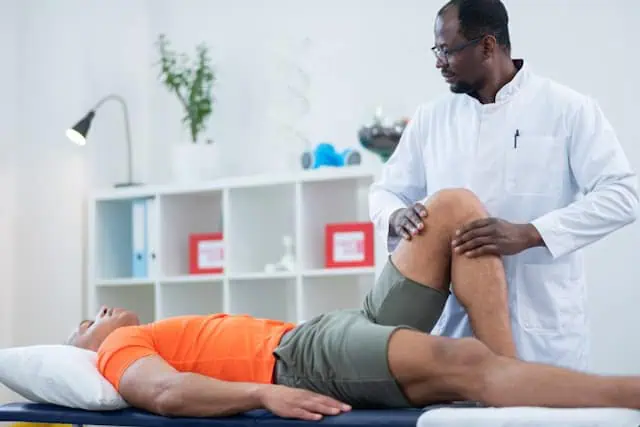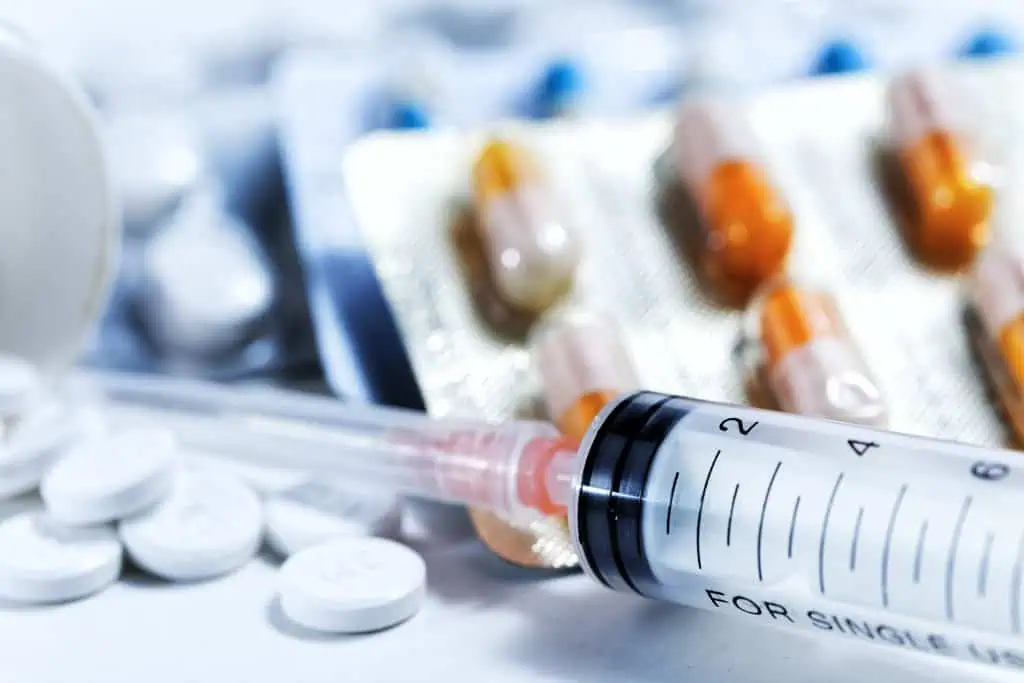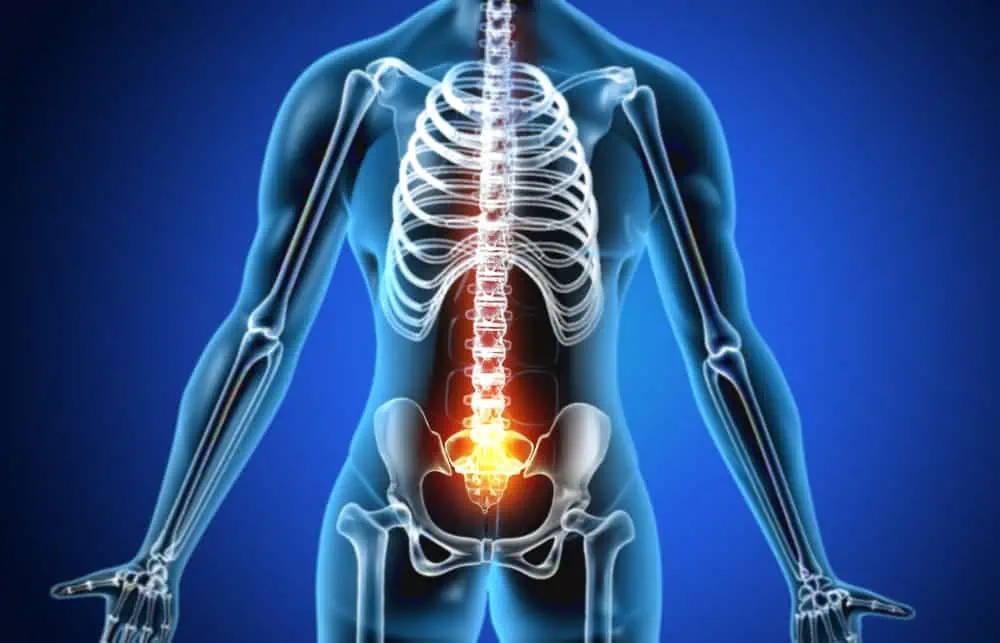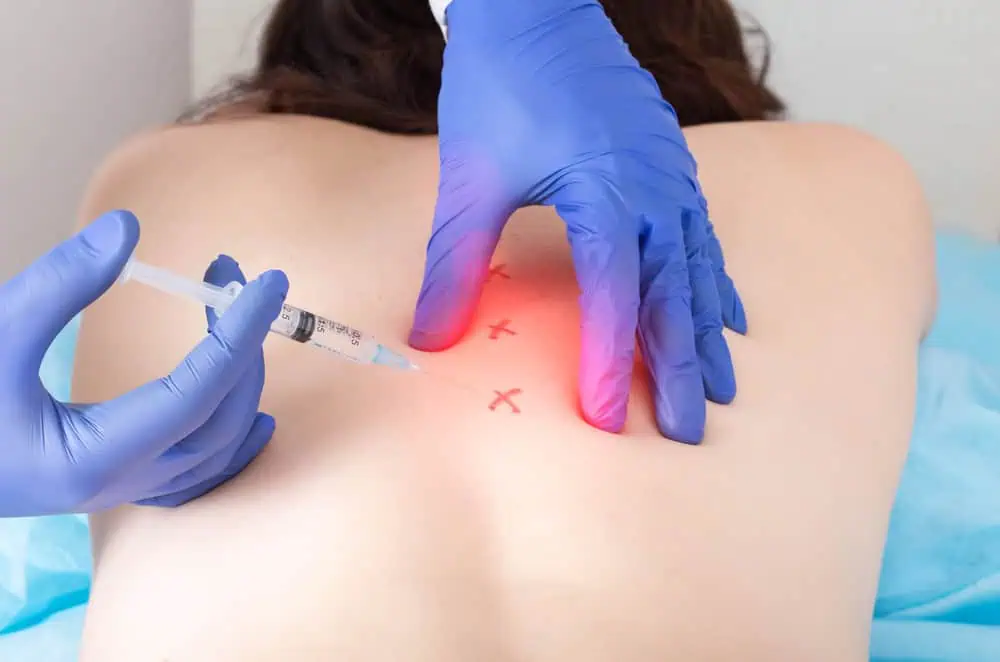Joint pain is a common issue for many individuals, especially those who engage in regular physical activity or have a history of joint-related conditions. It’s not unusual to seek out various methods to mitigate this discomfort, and one compound that frequently comes up in these discussions is Nandrolone Phenylpropionate, commonly known as NPP. This anabolic steroid has garnered attention for its potential joint pain relief properties, which could be a game-changer for those affected by persistent joint issues.
My analysis of NPP focuses on its therapeutic impact on joint pain. NPP is recognized by some in the bodybuilding community for its therapeutic benefits, particularly in terms of joint relief, which may support the body’s natural healing processes. However, like any substance with pharmacological effects, NPP also carries the potential for side effects and should be considered within the broader context of health and wellness. It’s important to understand the substance’s mechanisms, proper dosage, and administration, and to weigh its benefits against the possible risks.

Key Takeaways
- NPP is noted for its potential to alleviate joint pain, contributing to its discussion among fitness enthusiasts.
- Awareness of the proper use of NPP, including dosage and side effects, is crucial for safety.
- It is essential to evaluate NPP within the context of legal and ethical considerations, recovery, and user experiences.
Understanding NPP and Joint Pain
In my examination of Nandrolone Phenylpropionate (NPP) and its relationship with joint pain, I will delve into the scientific mechanisms, the potential benefits for joint pain mitigation, and how it stands up to other common treatments.
The Science Behind NPP
NPP, or Nandrolone Phenylpropionate, is an anabolic steroid known to accelerate collagen synthesis, which is crucial for joint health. My focus on the science of NPP reveals its interaction with the body’s natural processes that influence the health and recovery of joints.
How does NPP help with Joint Pain
Given NPP’s role in promoting collagen synthesis, I note that this can lead to the strengthening of joints, potentially providing pain relief for those suffering. Moreover, NPP’s anti-inflammatory properties might play a role in reducing the chronic inflammation associated with arthritis pain, leading to an improved quality of life for sufferers.

Comparing NPP with Traditional Treatments
When I compare NPP to traditional treatments for joint pain, which often involve nonsteroidal anti-inflammatory drugs (NSAIDs) or corticosteroids, it’s important to consider the differences in mechanism and potential side effects. My focus here is not to advocate for the use of one treatment over another, but to present an informative comparison. Traditional options may not target the underlying issue of joint health as directly as the potential collagen synthesis enhancement that NPP offers.
To learn more about the effectiveness of NPP and its use in medical scenarios, it is necessary to consult with healthcare providers or refer to research data, such as this guide on NPP.
Health Benefits of NPP
When discussing Nandrolone Phenylpropionate (NPP), it’s important to understand how it functions within the realm of health, especially in aspects related to strength, performance, and muscle recovery. This anabolic steroid has a significant impact on lean muscle mass and muscle development.
NPP in Bodybuilding
In bodybuilding, I’ve observed that NPP is celebrated for its potential in providing joint relief. This is crucial because the joint stress from lifting heavy weights and intense cardio can lead to chronic pain. According to EliteFitness, bodybuilders often resort to NPP to alleviate joint pain associated with extensive training.

NPP and Muscle Growth
The use of NPP can enhance lean muscle mass gains and improve overall muscle mass. I know that it aids in protein synthesis, which is a pivotal process for building muscle tissue. Advocates for its use argue that it fosters an anabolic environment favorable for muscle growth due to its impact on nitrogen retention, as detailed by Marbella Lyme Clinic.
Effects on Bone Density and Muscle Mass
Further, the benefits of NPP extend to improvements in bone density. I acknowledge that while there is a dearth of concrete data referencing the effect of nandrolone on bone health, it is known to exert advantageous effects on bone and muscle, a claim supported by an article from PMC.
NPP and Red Blood Cell Production
Moreover, NPP is thought to have a positive effect on the production of red blood cells, which can be beneficial for individuals suffering from anemia. An increase in red blood cell count can improve oxygen transport throughout the body, enhancing performance and exercise endurance.
By exploring the health benefits of NPP, I present a picture grounded in selective evidence that points to its multifaceted role in improving physical performance and aiding muscle recovery in bodybuilding contexts.
Potential Risks and Side Effects

While Nandrolone Phenylpropionate (NPP) may offer benefits such as joint pain relief, it’s important for me to acknowledge the potential side effects that could accompany its usage. Here’s a breakdown of some of these risks.
Common Side Effects
In my experience, the most frequently reported side effects of NPP include acne, hair loss, and gynecomastia, which is the enlargement of male breast tissue. This anabolic androgenic steroid can also potentially lead to virilization in women, manifesting as male characteristics such as deepened voice or increased body hair.
NPP and Hormonal Imbalance
The intervention of NPP in my body’s hormonal balance can lead to lower natural testosterone levels and an increase in estrogenic effects, especially when used in higher doses. This hormonal imbalance could necessitate the use of additional medication to counteract side effects like gynecomastia or suppressed testosterone production.
Liver and Cardiovascular Concerns
Anabolic steroids like NPP have been linked to liver strain, as well as negative impacts on cholesterol levels, which may lead to cardiovascular disease. My advice is, anyone considering NPP should be aware that, as a controlled substance, its non-medical use poses significant health risks and should be approached with caution.
NPP Dosage and Administration
When discussing NPP (Nandrolone Phenylpropionate), it’s critical to understand the proper dosages and methods of administration to maximize joint pain relief while minimizing potential side effects.
Recommended Dosages for Different Users
My exploration of clinical guidelines and user experiences suggests that dosages of NPP can vary significantly depending on the user’s experience with steroids, desired effects, and tolerance levels. For bodybuilders and athletes, a common practice is a dosage ranging from 100mg to 200mg per week, which can provide joint support and enhance muscle growth. Female users typically require a lower dose due to a higher sensitivity to steroids, with recommendations often under 50mg per week to reduce the risk of virilization.
Methods of NPP Administration
NPP is administered through injections, with the phenylpropionate ester influencing its release time and half-life. Due to its shorter half-life compared to other steroids, NPP is usually injected every other day or every three days to maintain stable blood levels. It’s imperative that I emphasize the necessity of receiving a prescription and instructions from a healthcare provider before proceeding with injections, ensuring safety and proper usage.
Cycle and Stacking Considerations
When I look into designing an NPP cycle, I focus on its compatibility with other steroids for those who choose to stack. An NPP cycle typically lasts 10-12 weeks, and it can be combined with other anabolic steroids to achieve specific goals. For instance, during bulking phases, NPP might be stacked with a testosterone variant, while cutting phases might pair NPP with compounds that favor lean mass preservation. It is crucial to account for NPP’s half-life when planning the cycle to avoid fluctuations in hormone levels.
Comparing NPP with Other Anabolic Steroids
When discussing the efficacy of Nandrolone Phenylpropionate (NPP) in alleviating joint pain, it’s important to compare it to other anabolic steroids like Deca-Durabolin and testosterone-based steroids. I’ll also touch on Trenbolone for advanced users, highlighting their differences and therapeutic effects.

NPP vs. Deca-Durabolin
Deca-Durabolin, also known as nandrolone decanoate, is renowned for its joint pain relief properties. Both NPP and Deca-Durabolin share the same active substance, nandrolone; however, the difference lies in their esters, affecting their absorption rate and half-life. NPP, with its shorter ester, reaches peak levels in the body more quickly and requires more frequent injections. On the other hand, Deca-Durabolin, with its longer ester, provides a more sustained release of nandrolone and might be preferred by users seeking less frequent dosing schedules.
NPP vs. Testosterone-Based Steroids
Testosterone-based steroids are often the baseline comparison for anabolic steroid effects, including joint relief. Testosterone itself is an androgenic-anabolic steroid lauded for numerous benefits including muscle growth and overall well-being. However, when comparing its effects on joint pain, NPP might offer superior joint relief due to its progestogenic activity, which is believed to promote collagen synthesis and increase lubrication in the joints.
NPP and Trenbolone for Advanced Users
Trenbolone is a potent anabolic steroid often used by advanced users for its significant muscle-building effects. Despite its many benefits, Trenbolone is not typically associated with joint relief; in fact, it may cause joint discomfort in some users due to its drying effect on the body. In contrast, NPP is commonly considered more joint-friendly and could be a preferred option for individuals seeking anabolic effects coupled with joint pain alleviation.
Recovery and Post Cycle Therapy
In my experience of examining anabolic steroid use and its effects, recovery and post-cycle therapy (PCT) are critical to maintaining health and hormonal balance after a cycle. Specific recovery agents, supplements, and hormones are instrumental in aiding this process.
Importance of Post Cycle Therapy
Post Cycle Therapy (PCT) is crucial to help restore my body’s natural hormone production after using steroids like NPP (Nandrolone Phenylpropionate). Without proper PCT, I’m aware that my body may face prolonged hormonal imbalances, leading to unwanted side effects such as decreased libido and potential fertility issues. The therapy typically involves using various medications that stimulate the production of natural hormones, such as testosterone, to re-establish a hormonal equilibrium.
Recovery Agents and Supplements
For recovery, I’ve found that certain agents and supplements greatly assist in alleviating joint discomfort and other post-cycle side effects. Agents that increase IGF-1 production can also promote healing and growth, supporting a quicker return to baseline joint health. Supplements like Omega-3 fatty acids and specific vitamins and minerals might play a supportive role in enhancing overall recovery.
Hormonal Recovery after NPP Use
Recovery of hormones, especially testosterone, is one of my top priorities post-NPP use. It helps prevent issues related to erectile dysfunction and protects my fertility. Hormonal recovery involves medications such as human chorionic gonadotropin (hCG) and selective estrogen receptor modulators (SERMs) to stimulate natural hormone production. This process is delicate, as the ultimate goal is to return to a state where my body can produce these hormones at normal levels without assistance.
Real-world Applications and User Experiences
In this section, we’re examining how NPP (Nandrolone Phenylpropionate) is perceived and used in real-world scenarios, with a focus on bodybuilding communities, clinical research, and athlete endorsements.

Bodybuilding Communities and Testimonials
Within the bodybuilding forums, I’ve noticed numerous members sharing their personal experiences with NPP, especially relating to its potential benefits on joint pain. Many claim that NPP helps alleviate discomfort, which allows for more rigorous and frequent training sessions. For example, participants in a discussion thread highlight doses of NPP that significantly reduced their elbow pain and helped them continue their fitness routines.
Clinical Studies on NPP Usage
I’ve seen studies that investigate the therapeutic properties of NPP, particularly in the context of muscle development and joint health. While the number of clinical trials is somewhat limited due to the controlled status of anabolic steroids, some research explores the potential of NPP to provide symptomatic relief for joint pain, which is highly pertinent for athletes who engage in strenuous activities.
Athlete Sponsorships and Endorsements
Sponsorships in sports often go hand-in-hand with product endorsements. Athletes across various disciplines might endorse products like NPP for their performance-enhancing qualities including muscle gains and faster recovery times. However, due to the strict regulation around performance-enhancing drugs, genuine endorsements within professional sports are scarce or non-existent. Fitness influencers and athletes outside of sanctioned competitions sometimes discuss their use of substances like NPP on forums and personal pages, which could be interpreted as indirect sponsorships.
Legal and Ethical Considerations
When discussing Nandrolone Phenylpropionate (NPP) in relation to joint pain treatment, it is essential to consider the implications of legal restrictions and ethical debates surrounding the use of this substance. My focus will be on the status of NPP as a controlled substance, the ongoing ethical debate in sports and fitness sectors, and the detailed regulations regarding its prescription.
NPP as a Controlled Substance
NPP falls under the category of anabolic androgenic steroids, which are listed as Schedule III controlled substances by the FDA. This means that while NPP has recognized medical uses, it also carries a significant potential for abuse which could lead to physical or psychological dependence. As a result, the distribution of NPP is strictly regulated to prevent misuse. For patients seeking relief from joint pain, this classification necessitates obtaining a valid prescription and adhering to monitoring regulations to ensure use is both safe and legal.
Ethical Debate in Sports and Fitness
Within the realm of sports and fitness, the use of performance-enhancing drugs, including NPP, remains a contentious ethical issue. While NPP can assist with joint pain and potentially improve performance, it’s often banned in professional sports due to the associated ethical concerns of obtaining an unnatural competitive edge. I recognize the importance of fair play and the commitment to uphold the integrity of sports while balancing the potential therapeutic benefits that NPP might offer individuals outside of a competitive environment.
Regulations and Prescription Requirements
Prescribing NPP demands strict compliance with regulations to prevent abuse and legal repercussions. Physicians need to be meticulous in ensuring that the prescription aligns with medicinal needs and that the use of NPP is justified, particularly given its potential for abuse as a performance-enhancing drug. I am aware that this involves thorough patient evaluations and a comprehensive understanding of federal and state regulations governing controlled substances. This procedural rigor serves to protect both the patient’s health and the prescribing professional’s legal standing.
Frequently Asked Questions
In this section, I’ll address common questions regarding the use of nandrolone phenylpropionate (NPP) for joint pain, its comparison with Deca-Durabolin, and the effectiveness and risks involved in using anabolic steroids for joint-related conditions.
What are the potential benefits of using nandrolone phenylpropionate (NPP) for joint discomfort?
NPP is often reported by users to provide relief from joint discomfort, potentially due to its anti-inflammatory properties and ability to enhance collagen synthesis.
How does Deca-Durabolin compare to NPP in terms of joint pain relief?
While both NPP and Deca-Durabolin are forms of nandrolone, Deca may have a longer half-life, which can lead to a difference in how these drugs affect joint pain relief.
Can anabolic steroids be considered effective for managing symptoms of arthritis?
Anabolic steroids like NPP may be utilized by some individuals to manage symptoms of arthritis; however, their effectiveness can vary and should be discussed with a healthcare professional.
What is the efficacy of nandrolone in the treatment of tendons and joint issues?
Nandrolone is thought to aid in the treatment of tendons and joint issues by promoting tissue repair and reducing inflammation, although research is limited and should be approached with caution.
Are there any significant risks associated with using NPP for joint-related conditions?
Yes, there are risks associated with using NPP, including potential hormonal imbalance, cardiovascular issues, and other side effects; it’s important to consider these before using NPP for joint-related conditions.
How does the use of Deca-Durabolin impact individuals with rheumatoid arthritis?
Research on the impact of Deca-Durabolin on individuals with rheumatoid arthritis is not conclusive, indicating that while it may offer some symptom relief, it also brings a risk of side effects that must be carefully evaluated.












